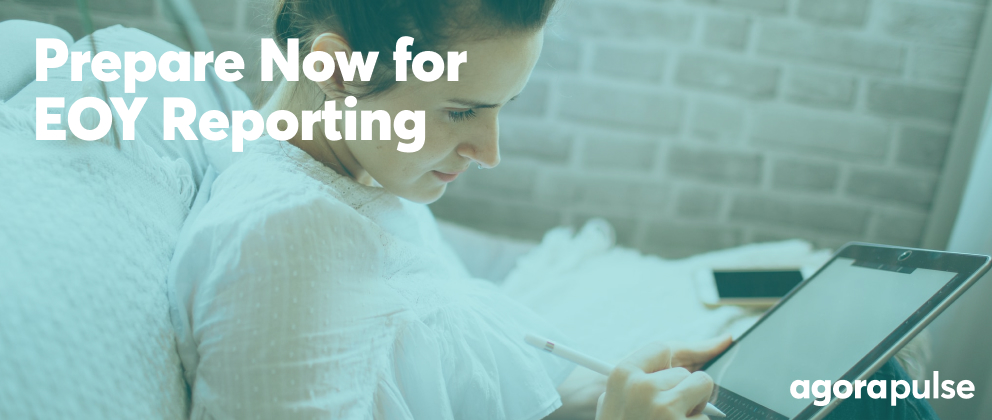Is your social media team set up for success? Do they have the tools they need to achieve your goals? Discover how you can structure your team to increase ROI.
Building your social media team structure is critical when more than one person manages your social media.
Whether you’re an independent consultant who needs to communicate with your client or an ad agency who is managing several accounts, coordination is key. Without it, you risk missing important opportunities. Or even worse, causing a social media crisis.
Right upfront, I’m going to let you know that all of this gets much easier when you use a dedicated social media management tool. I’ve been using Agorapulse for my team and clients for a couple of years now, and it has made a world of difference.
That being said, you can apply all the principles I’m about to share without the tool. It will just take more time to set up and maintain. That’s why it’s important to think about how much your time (and the time of your social media team) is worth to your agency … and how much more valuable it can be if spent elsewhere.
Assign Roles to Your Social Media Team
When you have more than one person responding to and managing comments from customers and clients, you still want to seem like a single smooth operation.
That doesn’t happen if a customer gets a response to their social media post, and then a minute later gets a different one. This comes across as uncoordinated at best. That’s why you need to plan who responds to what.
One way to do that is to assign people specific scheduled times to respond. You may not get the full benefit of your team when you do this though.
If you have a high volume business that needs more than one person available at a time, then using a tool is essential.
In Agorapulse, you can see who is responding to what in real time, before they ever hit send. This saves a lot of headaches.

You can also assign a response to another team member if you don’t know the answer.
For example, I have a client based in California, while I’m based in Michigan. If someone asks a specific question about what’s currently in stock, I can easily assign that to a team member who is at the local plant and can get the information.
It’s useful to have a list of what types of questions should go to which person, especially if you have a larger social media agency. You can also add a message when you assign a task so that the other person knows exactly what it is that you need them to do.

You can also leave internal notes for the whole team to see. On Twitter direct messages and Facebook private messages, simply click “Note” and add your comments or status for the team.

You can also leave internal notes about social media users on the Agorapulse “Fans and Followers” tab.

Foster Team Accountability
Another important part of your social media team strategy is to be able to answer background questions when needed. If you are doing this by hand, you can create a spreadsheet with every social media interaction and have each team member insert appropriate comments about their responses.
Obviously, this is one of the biggest time-saving functions of using a tool instead. In Agorapulse, you can see a history of who responded and when. That way if follow-up communication is needed, you can always go back to the source.

For example, with one of my real estate clients, a home buyer may ask to have a home search set up. By seeing who made the comment “yes, I can do that for you!” I’m able to double-check that the process was completed. Without Agorapulse, it would be easy to let things slip through the cracks without follow-up and lose valuable customers.
A tool like Agorapulse makes it easy to analyze how your social media team is spending their time.

You can see the number of comments reviewed, and how much time was spent. If one team member is taking on the majority of the work, then there may be better ways to structure your team to accomplish agency goals.
Perfect Your Communication System
Do you wish you had a list of prospective customers? Influencers who may want to review your product? Questions that customers ask which might make a good blog post?
This is where tagging comes into play.
Again, you can definitely track all this information in a spreadsheet, but it is a time-intensive process. When you use Agorapulse, you can create tags and privately tag any post or comment for future reference. This becomes a powerful relationship-building tool in your arsenal.
One of my clients is a big data conference. This strategy has been an important part of building a list of targets for potential conference sponsors, attendees, and speakers.
Don’t forget, often there is not only communication that needs to happen when responding to comments but in creating the original content in the first place.
In my business, most of my clients leave content creation up to me. But when I’ve worked with interns, it’s critical to manage the social media messaging. The best way to do this is to make sure that I approve each post before it goes live.
Before Agorapulse, I would create spreadsheets of all the content that needed approval, have it approved, and then upload it. (The good news is those spreadsheets still come in handy now with bulk upload!) Instead, I can create the whole post and then set it to be ready for review.
Social Media as a Team Effort
Of all the things to think about, the most important is that you are working as a team. When you are able to have each other’s back, focus on the customer, and create great content, you will see incredible results.
It doesn’t matter if you are an independent entrepreneur with a couple of clients, managing an intern, or part of a large social media agency, these key communication tools will make a big difference. You will stress less, have more fun, and provide a better social media experience.





